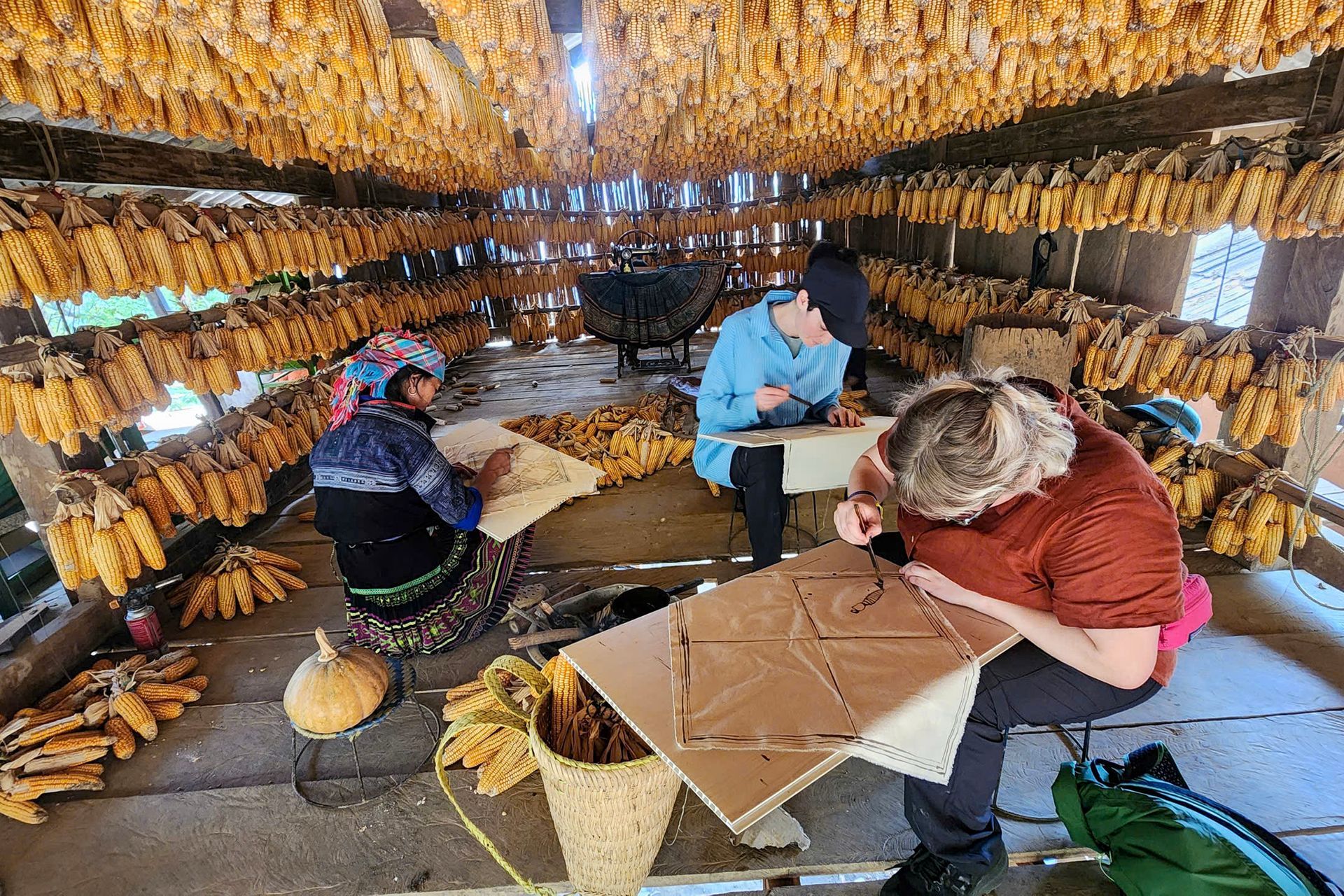Preserving the Ancient Art of H’mong Beeswax Batik: A Cultural Legacy in Every Line

Nestled among the misty mountains of northern Vietnam, the H’mong people have safeguarded a remarkable artistic tradition for generations — the art of beeswax batik. This delicate and time-consuming process, used to create intricate patterns on fabric, is far more than decoration. It is a living narrative of the H’mong way of life — one that expresses identity, spirituality, and community.
A Tradition Rooted in Time
The H’mong ethnic group, residing predominantly in provinces like Lao Cai, Ha Giang, and Dien Bien, are well known for their handwoven textiles. But it is the indigo-dyed hemp cloth, adorned with mesmerizing motifs created through beeswax drawing, that stands out as a symbol of cultural pride.
Traditionally, H’mong women begin learning the beeswax batik technique from a young age. This skill is often passed down from mother to daughter, representing not only craftsmanship but also a rite of passage into adulthood. Every hand-drawn pattern tells a story — from symbols of fertility and harmony to images inspired by nature and daily life.
The Art of Beeswax Batik
At the heart of this technique lies the use of melted beeswax, applied to handwoven hemp fabric with a traditional tool called a tjap or canting — a small copper or bamboo pen with a tiny spout. The artisan carefully draws freehand motifs onto the fabric. Once the design is completed, the cloth is dyed in a natural indigo bath. The areas covered in wax resist the dye, preserving the original color of the fabric.
After several rounds of dyeing, the wax is removed by boiling or ironing, revealing the striking contrast between the deep indigo and the untouched patterns beneath. The result is a stunning textile, uniquely personal and rich with meaning.
Cultural Significance
Beeswax batik is more than an artistic expression. It plays a central role in H’mong cultural events such as weddings, New Year festivals, and spiritual ceremonies. The patterns are often symbolic — a spiral may represent the life cycle, while geometric shapes may stand for harmony or protection.
In traditional H’mong belief, clothing is a form of identity that connects the living with their ancestors. This makes handmade textiles sacred. A well-made batik garment is believed to protect the soul and accompany the wearer into the afterlife.
Challenges and Revival
In recent decades, the practice of beeswax batik has declined, challenged by mass production, modern fashion, and lack of economic opportunities in remote villages. Many young H’mong are turning away from the tradition in pursuit of modern livelihoods.
However, there is a growing movement to revive and sustain this cultural treasure. Local cooperatives, community workshops, and social enterprises are now offering batik classes and promoting fair trade textile products. These efforts not only empower H’mong women economically but also keep the tradition alive for future generations.
How You Can Help
As a traveler, supporting authentic cultural experiences is a powerful way to contribute. Participating in a beeswax batik workshop in a H’mong village is more than a souvenir-making activity — it is a chance to witness resilience, heritage, and artistic mastery firsthand.
Whether you purchase a handmade batik scarf or spend a morning learning from a H’mong artisan, your engagement supports cultural preservation and respectful tourism.
Conclusion
The beeswax batik of the H’mong people is not merely an art form. It is a tapestry of memory, identity, and resistance woven into every fiber. Preserving this tradition is not only about saving a craft — it's about honoring the voices of a community whose stories deserve to be seen and heard for generations to come.











